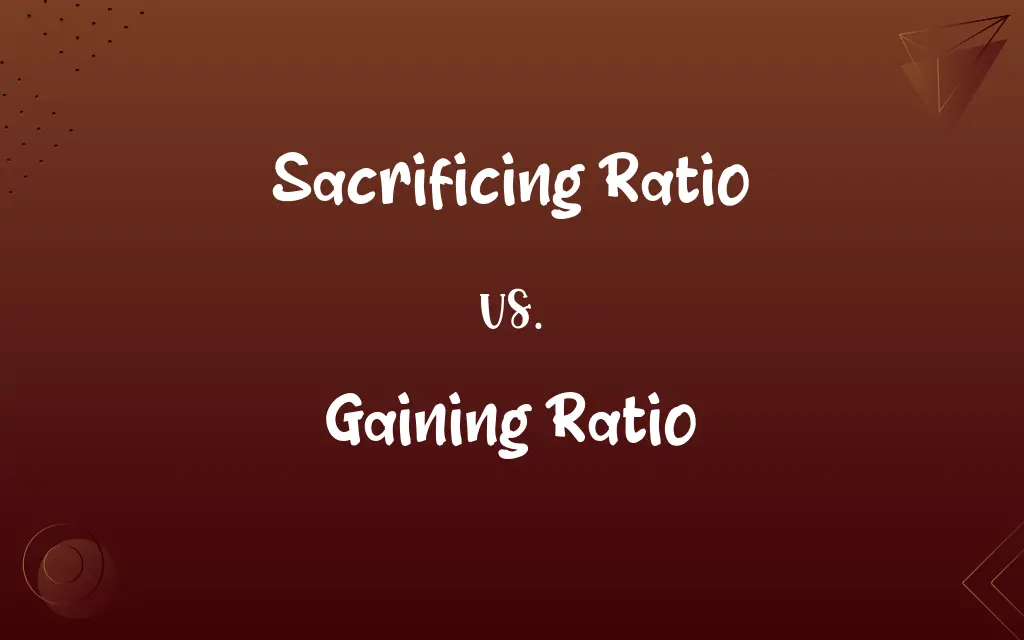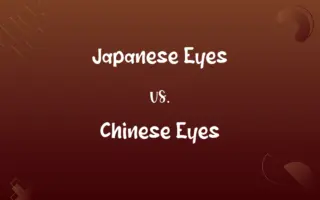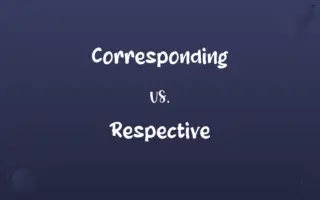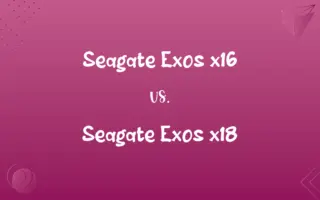Sacrificing Ratio vs. Gaining Ratio: Know the Difference

By Shumaila Saeed || Published on January 28, 2024
Sacrificing Ratio is the proportion of profit share given up by existing partners when a new partner joins, whereas Gaining Ratio is the share of profit gained by remaining partners when a partner exits.

Key Differences
Sacrificing Ratio is used when a new partner joins a partnership, requiring existing partners to give up a portion of their profit share. Gaining Ratio comes into play when a partner leaves the partnership, and the remaining partners gain a portion of the departing partner's profit share.
Shumaila Saeed
Jan 28, 2024
The Sacrificing Ratio is calculated based on the difference between the old and new profit-sharing ratios of the existing partners. The Gaining Ratio is determined by the share of profit that the remaining partners gain from the exiting partner, calculated as the difference between their new and old profit shares.
Shumaila Saeed
Jan 28, 2024
In the Sacrificing Ratio, existing partners lose a part of their profit entitlement, signifying a sacrifice for incorporating a new member. In contrast, the Gaining Ratio implies a benefit for remaining partners as they acquire a larger portion of the profits.
Shumaila Saeed
Jan 28, 2024
The Sacrificing Ratio is crucial during the expansion of a partnership, as it balances the interests of existing and new partners. The Gaining Ratio is important in the context of a partner's retirement or exit, ensuring a fair redistribution of profit shares.
Shumaila Saeed
Jan 28, 2024
The Sacrificing Ratio affects the equity of existing partners by reducing their share in the business. Conversely, the Gaining Ratio increases the equity stake of the remaining partners in the partnership.
Shumaila Saeed
Jan 28, 2024
ADVERTISEMENT
Comparison Chart
Effect on Partners
Existing partners sacrifice profit share
Remaining partners gain profit share
Shumaila Saeed
Jan 28, 2024
Calculation Method
Difference between old and new shares of existing partners
Difference in shares before and after a partner's exit
Shumaila Saeed
Jan 28, 2024
Impact on Partnership Equity
Reduces equity of existing partners
Increases equity of remaining partners
Shumaila Saeed
Jan 28, 2024
Implication for Partnership Dynamics
Balances interests in partnership expansion
Ensures fair profit distribution post-exit
Shumaila Saeed
Jan 28, 2024
ADVERTISEMENT
Sacrificing Ratio and Gaining Ratio Definitions
Sacrificing Ratio
Sacrificing Ratio is used when redistributing profits due to a new partner’s entry.
The partners determined the Sacrificing Ratio to integrate the new member fairly.
Shumaila Saeed
Jan 09, 2024
Gaining Ratio
Gaining Ratio is the increased share of profit gained by remaining partners.
The Gaining Ratio was significant due to the senior partner’s retirement.
Shumaila Saeed
Jan 09, 2024
Sacrificing Ratio
Sacrificing Ratio represents the relinquished profit entitlement of current partners.
The senior partners had a higher Sacrificing Ratio due to their larger initial shares.
Shumaila Saeed
Jan 09, 2024
Gaining Ratio
Gaining Ratio is applied to redistribute a departing partner's profit share.
The Gaining Ratio determined how the exiting partner's share was divided.
Shumaila Saeed
Jan 09, 2024
Sacrificing Ratio
Sacrificing Ratio is the share of profit foregone by existing partners.
With a 10% Sacrificing Ratio, each existing partner gave up 10% of their profit share.
Shumaila Saeed
Jan 09, 2024
ADVERTISEMENT
Gaining Ratio
Gaining Ratio quantifies the shift in profit distribution upon partnership changes.
The Gaining Ratio was adjusted to reflect each partner’s contribution to the business.
Shumaila Saeed
Jan 09, 2024
Sacrificing Ratio
Sacrificing Ratio quantifies the adjustment in existing partners’ profit shares.
The Sacrificing Ratio was calculated to accommodate the new partner’s share.
Shumaila Saeed
Jan 09, 2024
Gaining Ratio
Gaining Ratio measures the benefit to partners after a partner's departure.
With the Gaining Ratio, remaining partners saw an increase in their profit shares.
Shumaila Saeed
Jan 09, 2024
Sacrificing Ratio
Sacrificing Ratio balances profit sharing among all partners in a partnership.
The Sacrificing Ratio ensured equitable distribution among old and new partners.
Shumaila Saeed
Jan 09, 2024
Gaining Ratio
Gaining Ratio reflects the reallocation of profits among existing partners.
The Gaining Ratio favored the more active partners in the firm.
Shumaila Saeed
Jan 09, 2024
Repeatedly Asked Queries
What determines the Gaining Ratio?
Gaining Ratio is determined by the increase in profit share that remaining partners receive after a partner leaves.
Shumaila Saeed
Jan 28, 2024
Why is Sacrificing Ratio important?
Sacrificing Ratio is important for ensuring fair adjustment of profit shares when a new partner is added to the partnership.
Shumaila Saeed
Jan 28, 2024
What is Sacrificing Ratio in a partnership?
Sacrificing Ratio is the proportion of profit share given up by existing partners in a partnership when a new partner joins.
Shumaila Saeed
Jan 28, 2024
Does Sacrificing Ratio affect all partners equally?
Sacrificing Ratio affects partners based on their existing profit-sharing agreement and may not be equal for all.
Shumaila Saeed
Jan 28, 2024
What does Gaining Ratio signify in a partnership?
Gaining Ratio represents the proportion of profit share gained by remaining partners when a partner exits the partnership.
Shumaila Saeed
Jan 28, 2024
How is Sacrificing Ratio calculated?
Sacrificing Ratio is calculated as the difference between the old and new profit-sharing ratios of the existing partners.
Shumaila Saeed
Jan 28, 2024
When is Gaining Ratio applied?
Gaining Ratio is applied when a partner exits the partnership and their share of profit is redistributed.
Shumaila Saeed
Jan 28, 2024
Can Sacrificing Ratio be negotiated?
Yes, the Sacrificing Ratio can be negotiated among partners based on mutual agreement.
Shumaila Saeed
Jan 28, 2024
How does Gaining Ratio impact the partnership’s dynamics?
Gaining Ratio can impact dynamics by altering the profit distribution and possibly the decision-making power among partners.
Shumaila Saeed
Jan 28, 2024
Is Sacrificing Ratio always required when adding a new partner?
Yes, Sacrificing Ratio is typically required to accommodate the profit share of a new partner.
Shumaila Saeed
Jan 28, 2024
Is it possible to have no Sacrificing Ratio?
It is possible if the new partner contributes additional capital or assets equivalent to their profit share.
Shumaila Saeed
Jan 28, 2024
Can Gaining Ratio lead to conflicts?
Gaining Ratio can lead to conflicts if not agreed upon or perceived as unfair by the partners.
Shumaila Saeed
Jan 28, 2024
Are there legal implications for not adhering to Sacrificing Ratio?
Not adhering to the agreed Sacrificing Ratio can lead to legal disputes among partners.
Shumaila Saeed
Jan 28, 2024
Can a partner opt out of the Gaining Ratio?
Opting out of the Gaining Ratio would require a specific agreement or amendment to the partnership contract.
Shumaila Saeed
Jan 28, 2024
Is Gaining Ratio always proportional to existing shares?
Not necessarily; Gaining Ratio depends on the partnership agreement and may be influenced by various factors.
Shumaila Saeed
Jan 28, 2024
How is Gaining Ratio viewed legally?
Legally, Gaining Ratio must comply with the partnership agreement and any relevant partnership laws.
Shumaila Saeed
Jan 28, 2024
Can Sacrificing Ratio change over time?
Yes, the Sacrificing Ratio can change if the partnership agreement is revised or if there are further changes in partnership.
Shumaila Saeed
Jan 28, 2024
What factors influence the Gaining Ratio?
Factors like the terms of the partnership agreement, the nature of the partner’s exit, and the remaining partners' contributions can influence the Gaining Ratio.
Shumaila Saeed
Jan 28, 2024
What happens if partners disagree on the Sacrificing Ratio?
Disagreement on Sacrificing Ratio can lead to negotiation, mediation, or possibly restructuring of the partnership.
Shumaila Saeed
Jan 28, 2024
Does Gaining Ratio affect the partnership’s overall profits?
Gaining Ratio does not affect the total profits of the partnership but redistributes the existing profit share.
Shumaila Saeed
Jan 28, 2024
Share this page
Link for your blog / website
HTML
Link to share via messenger
About Author
Written by
Shumaila SaeedShumaila Saeed, an expert content creator with 6 years of experience, specializes in distilling complex topics into easily digestible comparisons, shining a light on the nuances that both inform and educate readers with clarity and accuracy.


































































